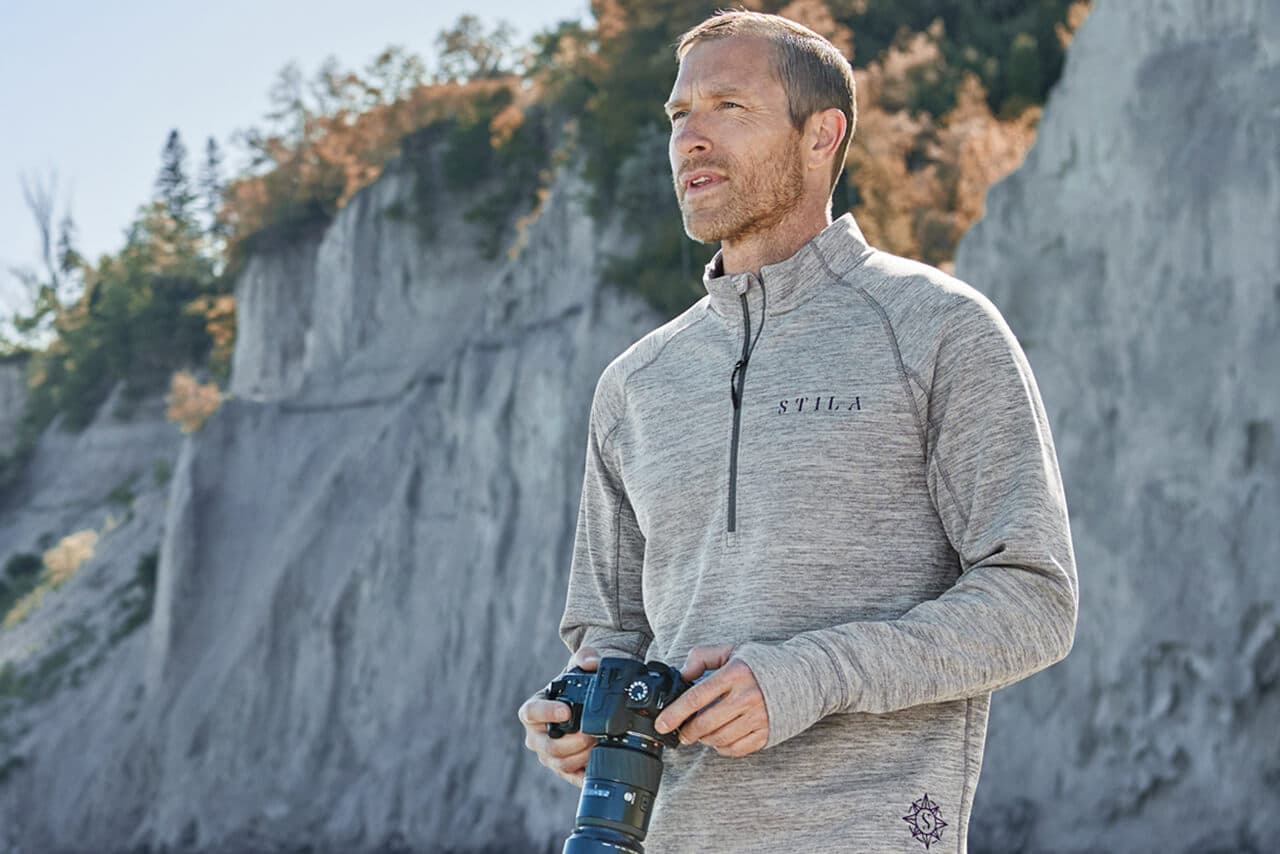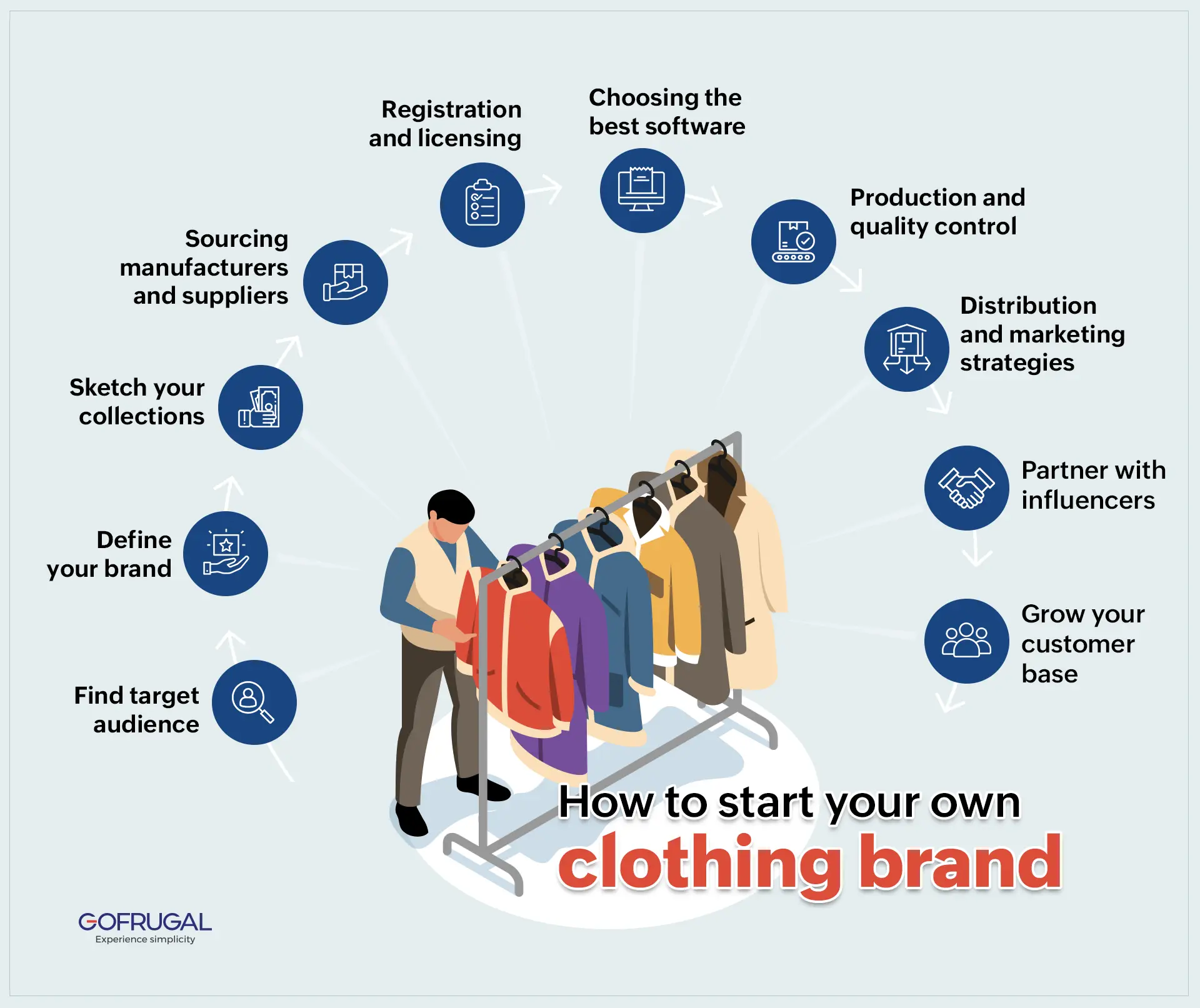How Fabric Choices in Branded Clothing Affect Comfort and Style
How Fabric Choices in Branded Clothing Affect Comfort and Style
Blog Article
The Value of Lasting Clothing: Just How It Influences the Atmosphere and Your Storage room
Lasting apparel is increasingly recognized for its vital function in reducing the environmental effect of the fast fashion business. By concentrating on green products and moral production methods, it addresses pushing environmental concerns. This shift not only profits the world but additionally influences customer options, leading to an extra thoughtful technique to wardrobe monitoring. Understanding these dynamics elevates necessary questions regarding style's future and individual responsibility fit it.
The Ecological Impact of Rapid Fashion

Advantages of Sustainable Materials
Sustainable products supply substantial benefits, particularly via environmentally friendly material choices that minimize ecological damage. These products likewise show durability and longevity, lowering the requirement for regular replacements. Because of this, they add to a more lasting style industry and advertise accountable customer actions.
Eco-Friendly Textile Options
While the fashion business has long been connected with fast fads and ecological harm, the increase of environment-friendly fabric selections provides a transformative opportunity. Sustainable products such as organic cotton, hemp, and Tencel have actually gotten popularity due to their lower ecological influence. These fabrics are commonly created without damaging pesticides and need less water, reducing their carbon impact - Branded Clothing. Additionally, many eco-friendly fabrics are biodegradable, adding to a circular economic situation by lessening waste. Picking sustainable materials not only supports eco accountable practices but likewise advertises much healthier communities. As customers become a lot more familiar with their buying power, the need for eco-friendly fabrics motivates brand names to introduce and embrace more sustainable production approaches, eventually profiting the earth and future generations
Sturdiness and Long Life Benefits
Numerous customers are significantly recognizing the sturdiness and long life advantages of lasting materials in their apparel choices. Unlike conventional materials, lasting products such as natural cotton, hemp, and recycled polyester are crafted to stand up to wear and tear, resulting in garments that last longer. This reduced frequency of replacement not only saves customers cash with time yet additionally lessens waste generated by rapid style. In addition, lasting apparel frequently employs eco-friendly production approaches that boost textile toughness, adding to a reduction in the general carbon footprint. By purchasing durable clothing, customers can grow an extra lasting wardrobe while taking pleasure in high-quality items that preserve their aesthetic and functionality gradually. Toughness and longevity stand as crucial advantages of choosing lasting materials.
Decreasing Waste With Sustainable Practices
Minimizing waste in the apparel industry can be accomplished with ingenious methods such as upcycling and repurposing materials. In addition, embracing minimal wardrobe strategies encourages consumers to prioritize high quality over amount, eventually lowering clothes usage. With each other, these methods add considerably to a more lasting clothes version.
Upcycling and Repurposing Materials
Upcycling and repurposing products have emerged as cutting-edge methods in the apparel industry, changing discarded textiles right into valuable brand-new items. This method not only minimizes waste however additionally encourages imagination and originality in clothes layout. By taking old garments and materials, designers can produce special items that mirror personal design while lowering the demand for new resources. In addition, upcycling commonly requires less energy and water compared to traditional production procedures, substantially lowering the environmental footprint of fashion. As customers come to be much more familiar with sustainability, the appeal of upcycled clothing remains to increase, promoting a round economy. Ultimately, these practices add to an extra lasting future, where style focuses on ecological wellness over rapid manufacturing and consumption.

Minimalist Wardrobe Techniques
As individuals progressively look for to decrease their ecological effect, embracing minimalist wardrobe strategies has actually obtained grip as a reliable strategy to lasting fashion. These strategies stress high quality over quantity, encouraging customers to curate a smaller sized collection of flexible, durable garments. By concentrating on ageless items that can be combined and matched, people can minimize the regularity of acquisitions and inevitably lower waste.Additionally, minimalism promotes conscious usage, urging shoppers to review the moral and click for info ecological effects of their options. This strategy not only fosters a more sustainable lifestyle but also simplifies day-to-day decision-making regarding attire. As individuals welcome minimalist concepts, they contribute to a style culture that values sustainability and liable consumerism, eventually resulting in an extra eco-conscious society.
The Role of Moral Labor in Sustainable Style
While many consumers are increasingly knowledgeable about the environmental effects of their garments selections, the importance of ethical labor methods in lasting fashion can not be forgotten. Honest labor incorporates fair salaries, safe working problems, and regard for workers' civil liberties, forming the foundation of responsible style manufacturing. Brand names that prioritize moral labor not only boost areas but likewise established a requirement for liability in the industry.Moreover, the assimilation of honest techniques cultivates transparency, allowing customers to make informed options concerning their acquisitions. This method contrasts dramatically with rapid fashion's exploitative labor designs, which often prioritize revenue over individuals. By sustaining business devoted to ethical labor, consumers add to a system that values human self-respect along with ecological sustainability. Moral labor is not just an add-on; it is vital to the wider objective of sustainable style, making sure that the pursuit for eco-friendliness does not come at the cost of human rights.
The Effect of Lasting Clothes on Carbon Emissions
Lasting apparel has the possible to considerably reduce carbon discharges related to the style sector. Traditional garment production adds significantly to greenhouse gas emissions, primarily as a result of energy-intensive manufacturing processes and the usage of non-renewable resources. In comparison, sustainable style concentrates on environment-friendly materials, such as natural cotton or recycled fibers, which commonly need much less energy to produce.Moreover, lasting brand names have a tendency to adopt much more effective manufacturing methods, reducing waste and lowering general emissions. By focusing on durability and classic style, lasting garments urges consumers to buy less regularly, additional decreasing the carbon impact related to overconsumption.Additionally, numerous lasting brand names are committed to transparency in their supply chains, making it possible for consumers to make educated selections that align with their values. Inevitably, shifting in the direction of sustainable clothes can bring about a significant decrease in carbon emissions, contributing to a much healthier earth and a more lasting future for the fashion market.
Sustaining Local Economic Situations With Lasting Choices
The shift towards lasting clothing not only addresses environmental problems but also significantly advantages local economies. By selecting lasting style, consumers commonly support small businesses and local artisans, improving neighborhood durability. These ventures commonly operate a smaller scale, prioritizing craftsmanship and honest methods over mass production.Investing in locally made sustainable clothing cultivates job creation and boosts financial development within neighborhoods. As consumers become more familiar redirected here with the environmental impact of their purchases, they increasingly seek items that mirror their values. This demand urges regional makers to embrace sustainable methods, contributing to a circular economy.Moreover, supporting neighborhood companies reduces transport discharges, straightening with eco-conscious customer actions. The interconnectedness of lasting garments and regional economic situations highlights the vital duty that individual selections play in advertising both ecological and economic wellness. By cultivating these regional connections, communities can grow while likewise functioning towards a more lasting future.
Transforming Your Wardrobe: Tips for a Lasting Wardrobe
As individuals look for to reduce their ecological impact, transforming a closet right into a sustainable wardrobe becomes an essential step. One reliable method is to review existing clothes, keeping only items that are worn consistently and that align with sustainability objectives. Focusing on quality over amount is important; purchasing durable items from environmentally friendly brand names can greatly decrease waste.Additionally, including second-hand items can take a breath brand-new life into a closet while minimizing environmental damage. Organizing garments swaps with friends or contributing extra items can even more advertise sustainability.When shopping, people need to look for materials that are organic, recycled, or naturally degradable, and stay clear of fast fashion merchants - Branded Clothing. Lastly, exercising mindful consumption by thoughtfully thinking about each acquisition can add to an extra lasting lifestyle. By implementing these suggestions, one can develop a closet that reflects individual design while sustaining ecological stewardship
Regularly Asked Questions
How Can I Identify Sustainable Clothes Brands?
To determine lasting garments brand names, one must look into products made use of, examine for qualifications like Fair Profession, and take a look at the brand name's transparency concerning their production processes, labor practices, and environmental influence, making certain moral and eco-friendly methods are prioritized.
What Are the Expenses Connected With Sustainable Style?
The expenses related to sustainable style can vary considerably. Greater production expenses, honest sourcing, and eco-friendly materials usually cause increased list prices, which may hinder some customers while attracting eco mindful buyers.
Can Lasting Apparel Be Trendy and fashionable?
Lasting clothes can without a doubt be stylish and stylish. Designers increasingly go to my blog focus on ingenious materials and honest production techniques, confirming that fashion and sustainability can exist side-by-side. Customers now have varied options that blend visual appeals with environmental awareness.
How Does Washing Clothing Affect Their Sustainability?
Cleaning clothes substantially impacts sustainability by consuming water and energy, contributing to air pollution, and causing microplastic release. Constant washing can deteriorate materials, reducing their lifespan and increasing the requirement for substitutes, eventually aggravating environmental problems.
What Is the Lifespan of Lasting Apparel Compared to Quick Style?
The lifespan of sustainable apparel usually exceeds that of quick style items, typically long-term numerous years due to quality materials and craftsmanship. In contrast, fast style garments may deteriorate swiftly, requiring even more regular substitutes. Lasting garments is significantly identified for its crucial function in reducing the environmental impact of the fast style market. While numerous consumers are increasingly aware of the environmental consequences of their garments choices, the importance of honest labor practices in sustainable style can not be forgotten. Branded Clothing. Sustainable apparel has the possible to substantially lower carbon discharges connected with the fashion sector. In comparison, sustainable style focuses on eco-friendly materials, such as natural cotton or recycled fibers, which often require less energy to produce.Moreover, sustainable brands tend to adopt extra effective manufacturing techniques, lessening waste and lowering overall emissions. By prioritizing toughness and classic style, sustainable garments urges customers to buy less regularly, additional minimizing the carbon footprint linked with overconsumption.Additionally, several lasting brand names are devoted to transparency in their supply chains, making it possible for consumers to make enlightened choices that line up with their values
Report this page